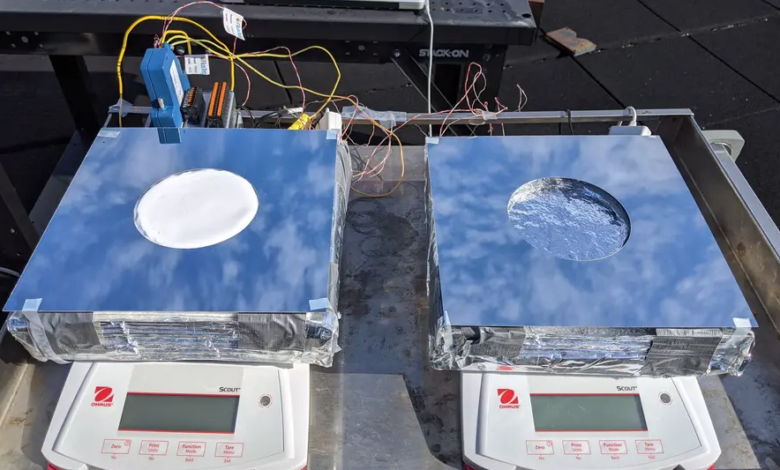Passive cooling, MIT system only needs a little water

Insulated cooling with evaporation and radiation does not need electricity
(Sustainabiliteynvironemt.com) – A group of scientists in the United States has brought passive cooling technology to a new level of efficiency. The work, conducted by the engineers of the Massachusetts Institute of Technology (MIT), has combined three technologies known to obtain a cooling system that can operate without electricity and with only small amounts of water. But above all with a yield of 300% higher than that of the best passive cooling solution.
New solutions for hot summers
The exceptionally high temperatures this summer have forced many people to tie their well-being to the prolonged use of air conditioners and fans. Unfortunately, it is now known that this is not a real weather “exception“. As the world gets warmer, the use of air conditioning systems will increase significantly, putting a strain on power grids and the user portfolio. But above all by risking the lives of those who do not have economic availability or access to electricity.
Also for this reason it becomes increasingly important to focus on low or zero-consumption solutions. The study by Zhengmao Lu and colleagues, creators of a cooling device able to meet these needs, is part of the research. The system intelligently combines the advances of previous standalone cooling projects – radiative and evaporative cooling – with a good insulating product. The end result achieves real-world efficiencies, although more research is needed to reduce cost.
Passive cooling, a new recipe
In detail, the invention of MIT consists of three layers of material to form a compact panel. The top layer is a porous aerogel made of polyethylene. The material is highly insulating but allows both water vapor and infrared radiation to pass freely, while rejecting other wavelengths. In the middle there is a porous hydrogel, composed mainly of water, which constitutes the infrared emitting evaporative layer; in the final part a mirror.
Read also Efficient and stable perovskite solar cell, NREL record-breaking 100 days
This system of “insulated cooling with evaporation and radiation” is able to lower the internal temperature of about 10 ºC compared to the external one. According to MIT, the technology could “allow safe storage of food for about 40% longer in very wet conditions” or “triple the time in dry conditions”. It could also be used to cool the water used in air conditioners, allowing these devices to consume less energy while remaining equally effective. The results are reported in the journal Cell Reports Physical Science.





